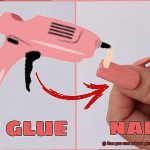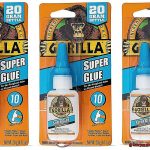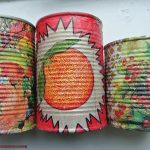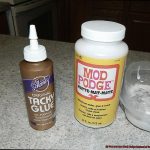Get ready to dive headfirst into the captivating world of dried flowers and discover the magic of using super glue to preserve their beauty. Picture this: capturing a fleeting moment of nature’s splendor, freezing it in time, and turning it into a stunning centerpiece or a heartfelt gift. Intrigued? Well, hold onto your hats because we’re about to unravel the mystery surrounding the use of super glue on delicate blossoms.
In this blog post, we’ll be your guide through the enchanting realm of dried flowers preservation. We’ll reveal the secrets behind using super glue to fix and enhance these botanical treasures. Now, you might be wondering if such a strong adhesive is compatible with fragile petals – fear not. We’re here to show you just how miraculous this combination can be.
So buckle up and join us as we explore the transformative powers of super glue. We’ll teach you all the techniques for applying it to dried flowers like a pro. Plus, we’ll dish out some essential tips for creating captivating floral arrangements that exude nostalgic beauty. Trust us; this is going to be one heck of an adventure.
Are you ready to embark on this enchanting journey? Let’s unlock the potentials of super glue on dried flowers and start preserving nature’s timeless allure together.
Assessing the Condition of Dried Flowers
Contents
- 1 Assessing the Condition of Dried Flowers
- 2 Applying Super Glue to Dried Flowers
- 3 Working Quickly with Super Glue
- 4 Removing Excess Glue from Dried Flowers
- 5 Securing the Bond with Super Glue
- 6 Handling Dried Flowers After Application
- 7 Tips for Using Super Glue on Dried Flowers
- 8 Advantages and Disadvantages of Using Super Glue on Dried Flowers
- 9 Conclusion
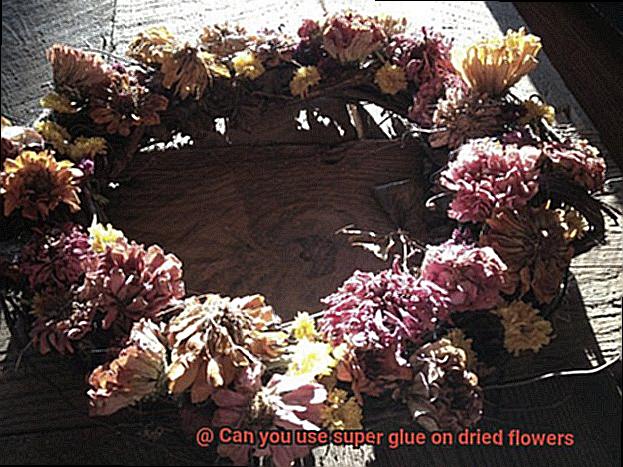
Dried flowers have become increasingly popular for their enduring beauty in floral arrangements. However, before embarking on a gluing project with these fragile botanicals, it is essential to assess their condition. This comprehensive guide will explore the critical factors that influence dried flower condition and provide invaluable insights for achieving successful outcomes.
Inspect for Damage:
Careful examination is paramount when assessing dried flowers. Look for telltale signs of damage or deterioration, such as discoloration, breakage, or brittleness. Fragile flowers that crumble easily may not be suitable for gluing with super glue.
Check Moisture Content:
The presence of moisture can significantly impact the bonding ability of super glue. Gently press a tissue against the petals to detect any signs of dampness. If moisture is present, it is crucial to wait until the flowers are fully dry before attempting to apply glue.

Consider Material Type:
The texture and thickness of dried flower petals vary across different species. Flowers like roses or lilies possess thicker petals that lend themselves well to gluing. Delicate varieties like baby’s breath or lavender demand extra caution due to their fragile nature, which may not withstand the adhesive properties of super glue.
Evaluate Previous Treatments:
It is imperative to take into account any prior treatments or coatings applied to dried flowers. Preservatives or chemicals used in preservation processes can interfere with the adhesive properties of super glue. Before applying glue to an entire flower, conduct a small test on a discreet area to ensure compatibility.
Assess Aesthetic Value:
Consider the overall appearance of the dried flowers before proceeding with gluing. If the flowers have significantly faded or sustained extensive damage, gluing them may not yield satisfactory results. It is crucial to evaluate whether gluing will enhance or detract from their inherent beauty.
Applying Super Glue to Dried Flowers
Whether you’re an experienced floral enthusiast or just beginning your journey into the realm of dried flowers, this comprehensive guide will provide you with all the tips and tricks you need to know about applying super glue to your delicate floral arrangements. So grab your favorite dried blooms, put on your creative hat, and let’s embark on a floral adventure.
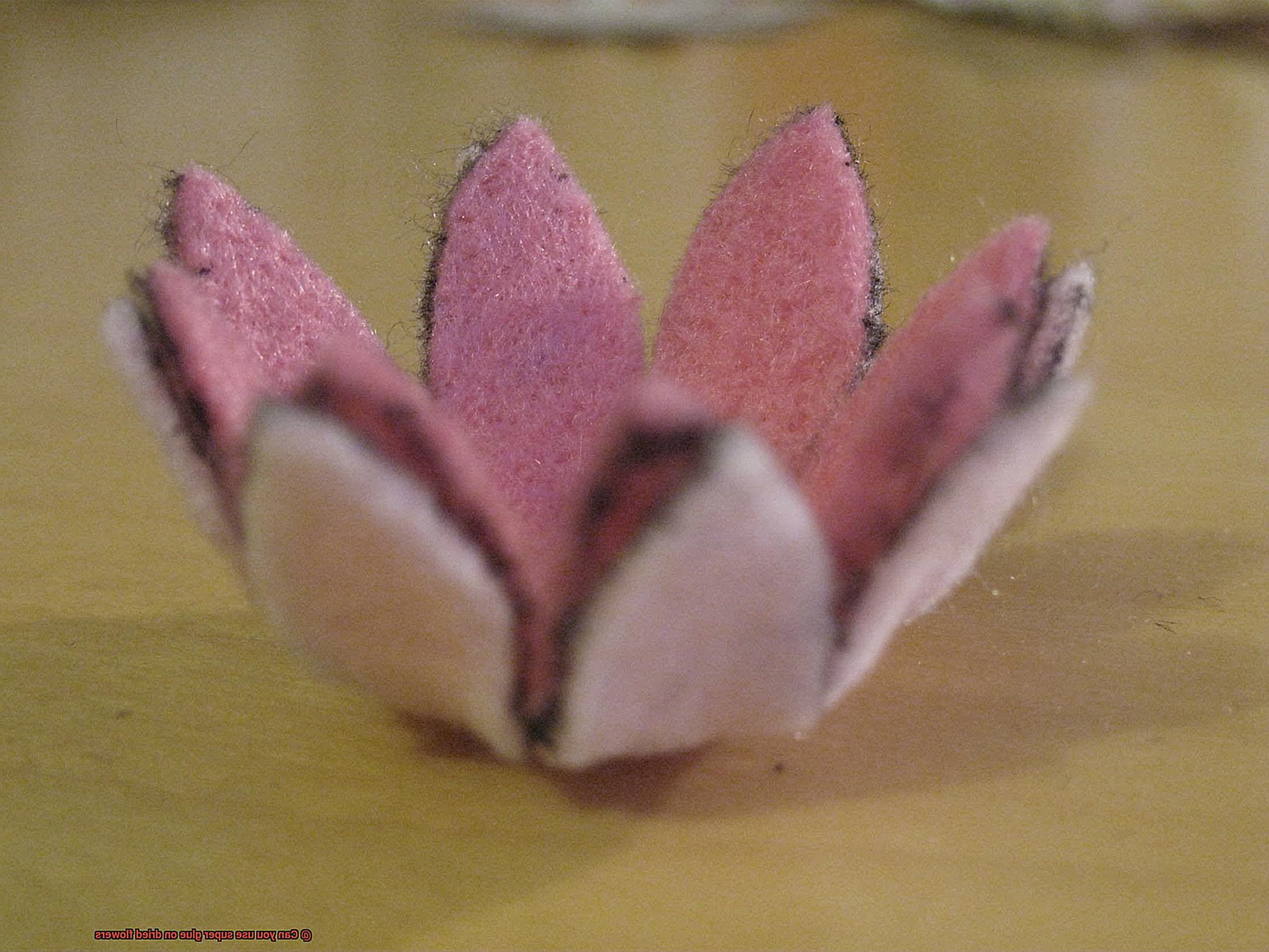
The Delicate Dance with Dried Flowers
Dried flowers are like fragile treasures that have stood the test of time. Before we delve into the magic of super glue, it’s essential to understand the nature of these exquisite beauties. They require gentle handling and care to avoid any mishaps or unfortunate crumbling incidents.
Prepping for Success
To lay the foundation for a successful bond, ensure that your dried flowers are completely dry. Lingering moisture can hinder the adhesive’s effectiveness. Treat your flowers with tenderness as you gently clean them, removing any dust or debris that might interfere with the bonding process.
Less is More
When it comes to applying super glue, remember that less is more. Excessive glue can create a messy appearance and detract from the natural elegance of your arrangement. Instead, apply a thin layer of glue only to the areas that need reattachment or reinforcement, ensuring a seamless and refined look.
The Art of Bonding
Now it’s time for the magic moment – bonding your dried flowers with super glue. As you delicately hold the parts together firmly for a few seconds after applying the glue, a sense of anticipation fills the air. This allows the adhesive to set properly, forging a strong and unbreakable bond between the flower parts.
Extra Support for Heavyweights
For larger or heavier dried flowers, providing extra support is vital. Consider the use of floral wire or small sticks to stabilize and prevent glued parts from separating. This additional reinforcement will give your arrangement the strength it needs to stand tall, defying gravity and captivating all who behold it.
Section 6: Specialized Adhesives for Special Flowers
While super glue works wonders for many dried flowers, some delicate or intricate varieties may require specialized adhesives. These floral-specific adhesives are meticulously crafted to preserve and enhance the beauty of your floral creations without causing any damage. Embrace the versatility of these specialized options for your most treasured blooms.
Section 7: Safety First, Creative Second
We always prioritize safety when working with super glue. Protect yourself by donning gloves and selecting a well-ventilated area to avoid inhaling any potentially harmful fumes. Remember, safety should always be a cornerstone of your creative process.
Working Quickly with Super Glue
In the world of crafting and DIY, super glue is a magical adhesive that can work wonders when it comes to bonding materials together. However, when working with super glue on dried flowers, it’s crucial to handle the adhesive quickly and efficiently to avoid damaging the delicate petals and leaves. With these handy tips and tricks, you’ll be able to create stunning dried flower creations with ease.

- Prepare the surface: Before applying super glue to dried flowers, ensure that the surface is clean and dry. This will remove any dirt, dust, or oils that could hinder the bonding process and ensure a strong bond.
- Less is more: Use a small amount of super glue to avoid excess residue or seepage onto the delicate petals. Applying too much glue can ruin the aesthetic of your arrangement.
- Be prepared: Have all your tools and materials ready beforehand. Position your dried flowers in the desired arrangement and keep the super glue bottle or applicator easily accessible. Time is precious when working with super glue, so don’t waste it searching for what you need.
- Precision is key: Use a small applicator or toothpick to control the amount of glue being applied. This allows for better control and prevents accidental spills or excessive gluing.
- Work in small sections: To ensure a strong bond, work in small sections when gluing dried flowers together. This allows for better control and reduces the risk of rushing or making mistakes.
- Hold firmly but gently: Once you’ve applied the super glue, hold the pieces together firmly but gently for a few seconds. This ensures a proper bond without damaging the delicate nature of dried flowers.
- Patience is key: Allow sufficient drying time for the super glue to fully cure before handling or moving the glued dried flowers. While it usually takes just a few minutes, waiting at least 24 hours will ensure maximum strength.
- Remove excess glue: If you have an accidental spill or excess glue residue on your dried flowers, use a small amount of acetone or nail polish remover to remove it. Use these solvents sparingly to avoid damaging the delicate beauty of your dried flowers.
- Store properly: After use, tightly close the cap or nozzle of the super glue bottle and store it in a cool and dry place. Proper storage will prevent the adhesive from drying out and ensure it remains usable for future projects.

Removing Excess Glue from Dried Flowers
Preserving the beauty of nature through dried flower arrangements is a captivating art form. However, the delicate process of gluing these petals and leaves can sometimes result in excess glue. Safely removing this unwanted residue requires a careful approach to avoid damaging the flowers. In this article, we will explore various methods to delicately remove excess glue from dried flowers, ensuring their natural beauty remains intact.
Method 1: Solvent-Based Approach
- Begin by testing a small, inconspicuous area of the flower to ensure compatibility.
- Gently apply a small amount of acetone or nail polish remover on a cotton swab or soft cloth.
- Dab with caution, avoiding vigorous rubbing that could damage the petals.
- Continue dabbing until the excess glue loosens and can be safely removed.
Method 2: Heat Treatment
- Employ a hairdryer on a low setting to gently warm up the glue.
- Maintain a distance of several inches between the hairdryer and the glued area, applying heat in short bursts.
- As the glue becomes soft and pliable, delicately peel it off using tweezers or your fingertips.
- Avoid exposing the flowers to excessive heat, as it may render them brittle.
Method 3: Adhesive Remover
- Acquire an adhesive remover specially formulated for delicate materials like flowers.
- Carefully follow the manufacturer’s instructions for optimal results.
- Apply a small amount of the remover onto a cloth or cotton swab.
- With gentle dabs, loosen and remove the excess glue.
Post-Glue Removal Care:
- After successfully removing the excess glue, tenderly clean the dried flowers with a soft brush or compressed air to eliminate any remaining residue or dust particles.
- To prevent future occurrences of excess glue, exercise precision and moderation when applying adhesive.
Securing the Bond with Super Glue
Dried flowers hold a special place in our hearts, capturing memories and adding a touch of natural beauty to our homes. But how do we ensure that these delicate petals stay in place without leaving behind any unsightly residue? Super glue is the secret weapon in securing the bond between dried flowers, providing a lasting and seamless hold.
Super glue, also known as cyanoacrylate, is a powerful adhesive that forms strong bonds when it comes into contact with moisture. However, since dried flowers lack moisture, the effectiveness of super glue may vary. Factors such as the type of flower, its condition, and whether any preservatives were used during the drying process can all influence the success of using super glue.
To prepare for bonding, start by cleaning any debris from the dried flowers. Gently roughen the surface of the petals with fine-grit sandpaper or a toothpick to improve adhesion. Next, choose an appropriate super glue formulation for your specific needs. Gel-based super glue is often recommended for vertical applications or when working with delicate flowers.
When applying super glue, less is more. Use a small brush or toothpick to apply a thin layer of glue to the desired areas. Avoid excessive amounts that could leave behind residue or damage the flower.
Super glue dries quickly but may take longer to fully cure and form a strong bond. Allow sufficient curing time before handling or displaying your bonded flowers. This can typically take anywhere from a few minutes to several hours, depending on the specific super glue formulation used.
Precautions should be taken when using super glue on dried flowers. Work in a well-ventilated area, wear protective gloves, and avoid contact with skin or eyes. Before applying super glue to the entire arrangement, test its compatibility with a small sample flower.
While super glue can be effective, there are alternative methods for bonding dried flowers. Floral adhesive or clear-drying craft glue offer more flexibility and gentler bonding for delicate flowers.
Handling Dried Flowers After Application
Dried flowers are exquisite keepsakes, capturing nature’s fleeting beauty. When secured with super glue, they become long-lasting treasures. However, proper handling is crucial to ensure their preservation. In this article, we will delve into the importance of handling dried flowers after applying super glue. We will provide you with valuable tips to protect these delicate wonders and maintain their breathtaking allure.
Allow the Glue to Dry Completely:
Patience is paramount when working with dried flowers. After applying super glue, give it ample time to dry completely before handling the flowers. The drying time varies depending on the glue type and amount used. Follow the manufacturer’s instructions for optimal results.
Minimize Contact with Glued Areas:
Once the glue has dried, it is essential to avoid touching the glued parts of the flowers as much as possible. Maintaining undisturbed adhesive bonds is crucial in preventing potential damage to delicate petals or leaves. Consider using tweezers or tongs when moving or transporting the dried flowers, ensuring utmost care without accidental contact.
Proper Storage is Key:
To extend the longevity of your dried flowers, store them in a cool, dry place away from direct sunlight or moisture. Excessive heat or humidity can weaken the glue bond and cause the flowers to deteriorate over time. By providing an ideal environment for preservation, you can relish their beauty for years to come.
Gentle Cleaning Techniques:
Cleaning dried flowers requires a soft touch. Use a soft brush or feather duster to delicately remove dirt or debris that may have settled on the petals or leaves. Avoid water or cleaning solutions as they can damage both the glue and the delicate flowers themselves.
Reattaching Loose Parts:
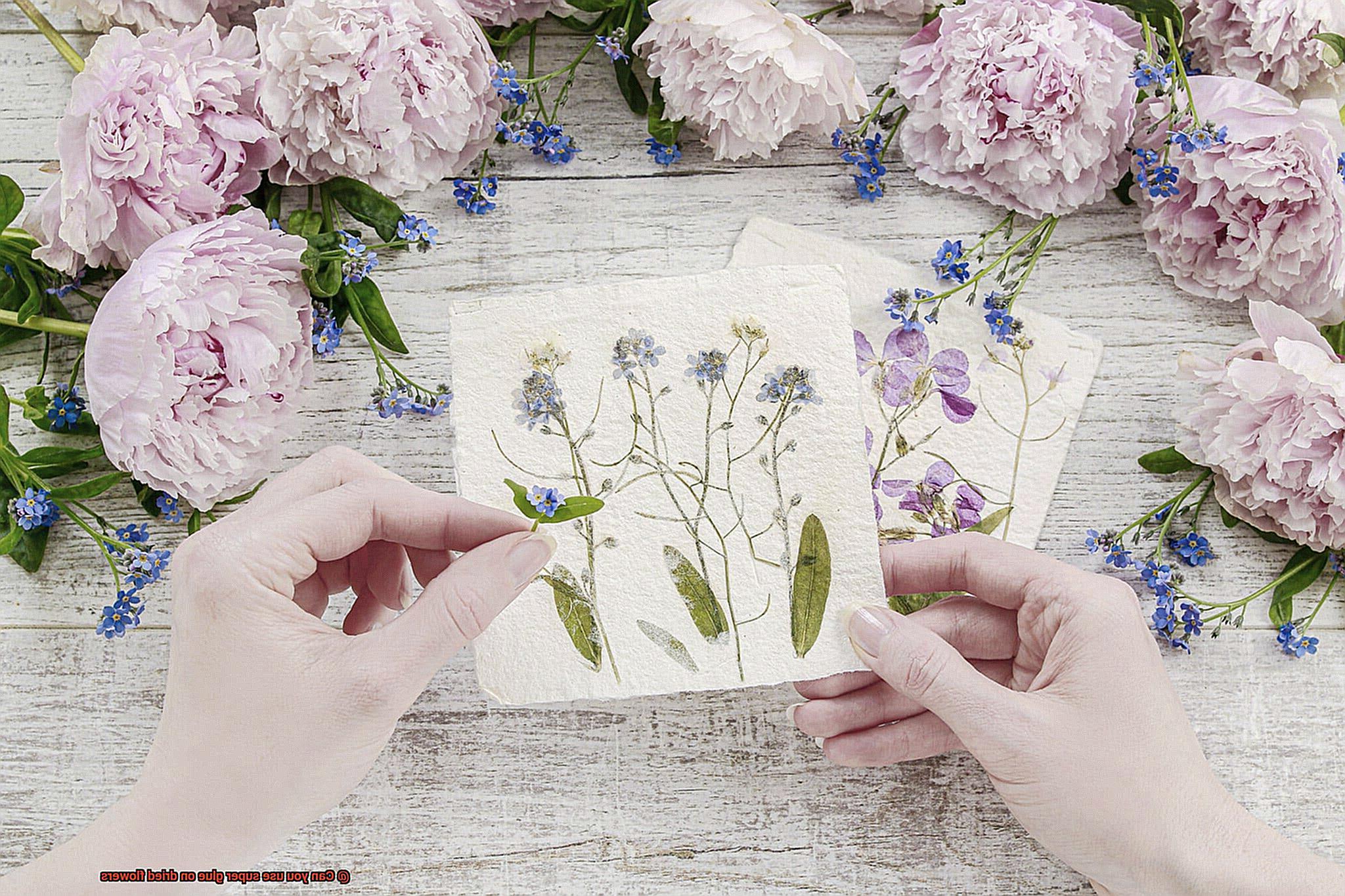
In the unfortunate event that a part of your dried flower becomes detached or starts to loosen, fear not. Additional super glue can save the day. However, exercise caution and apply only a small amount of glue to avoid overloading the area and causing further damage.
Displaying with Stability:
For displaying dried flowers in vases or arrangements, provide them with support and stability using floral foam or a suitable base material. This ensures that the glued parts remain intact and visually captivating, preventing accidental movement or displacement.
Tips for Using Super Glue on Dried Flowers
Super glue is a great option for attaching dried flowers to various surfaces, but there are important tips and precautions to consider for the best results. Here are five helpful tips:
Prepare the flowers
Before using super glue on dried flowers, ensure they are free from excess moisture. This can be done by placing them in a dry area or using a desiccant like silica gel. Dry flowers are easier to work with and bond more effectively.
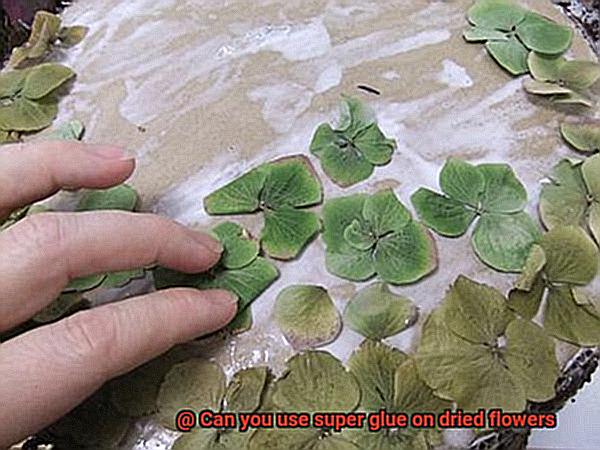
Handle with care
Dried flowers can be fragile, so handle them gently. Hold the flower by its stem or petals when applying the super glue to avoid accidental damage.
Use a small amount of glue
Super glue is strong, so use it sparingly. Apply a small dot or thin line of glue using a toothpick or small brush. Too much glue can create messy residue and detract from the flower’s appearance.
Choose the right glue
Not all super glues are suitable for dried flowers. Opt for a clear, quick-drying formula designed for porous materials like dried flowers. This ensures a secure bond without visible marks.
Lightly sand the surface
For an even stronger bond, lightly sand the surface where the glue will be applied. This creates better adhesion between the flower and the surface, ensuring a secure attachment.
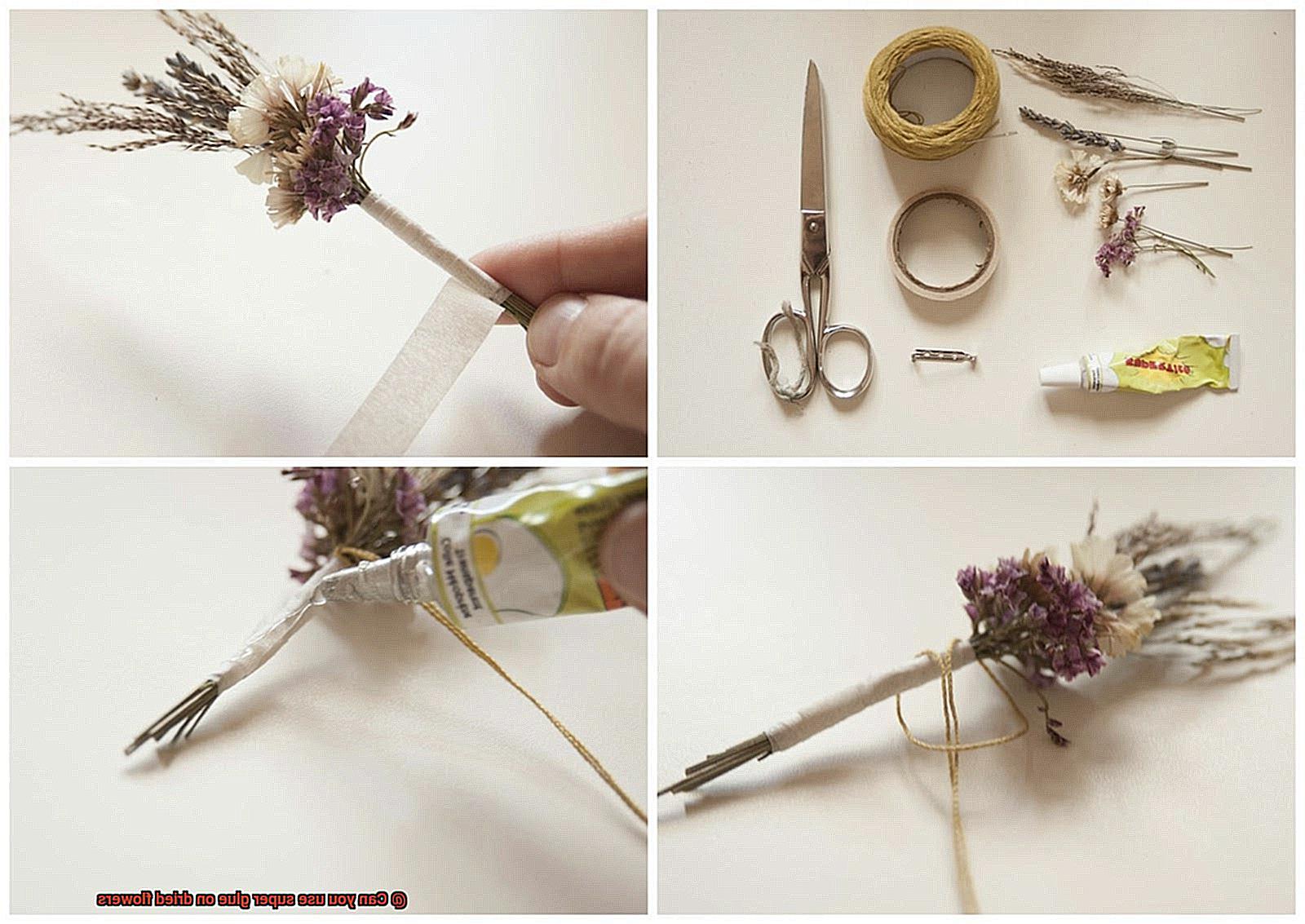
Advantages and Disadvantages of Using Super Glue on Dried Flowers
Well, fret no more. We’re here to reveal the petals’ secret when it comes to the advantages and disadvantages of using this powerful adhesive. So, let’s dive in and explore whether to stick or not to stick.
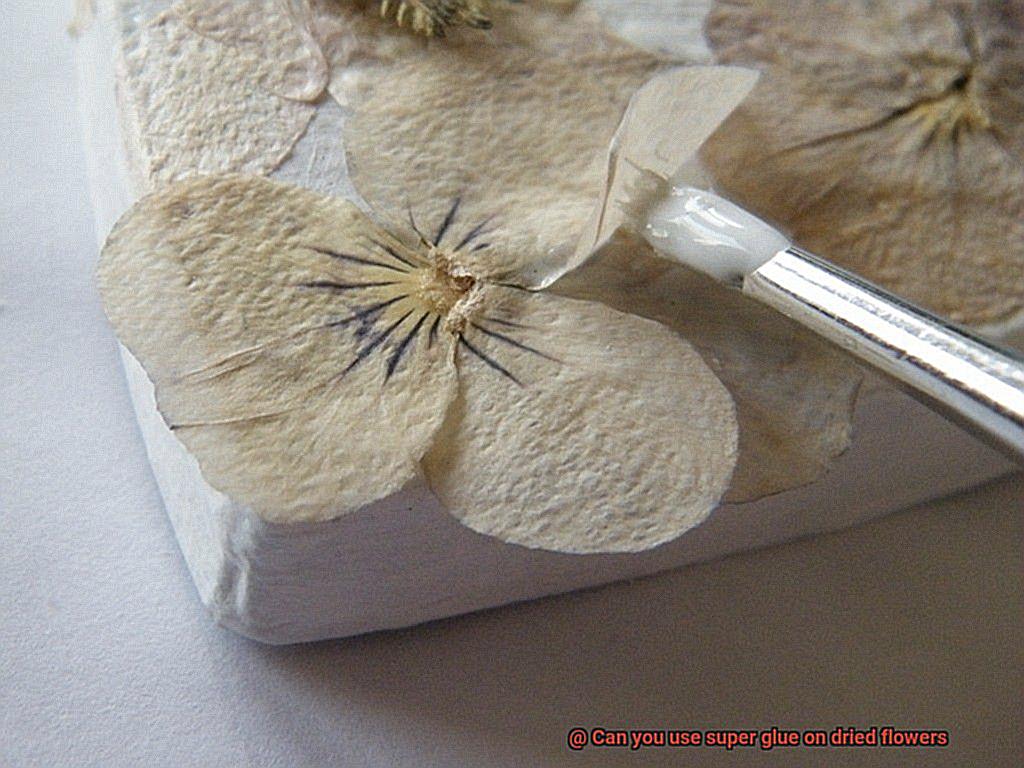
Advantages:
- A Bond That Stands the Test of Time: Super glue is renowned for its ability to create a strong and durable bond. When used on dried flowers, it ensures that your arrangements stay intact, preventing any petal mishaps or accidental dismantling.
- Time Waits for No One: Crafting with dried flowers requires a sense of urgency, and that’s where super glue shines. Its quick-drying formula means you can secure those delicate beauties without worrying about disturbing the arrangement or waiting hours for the glue to set.
- Versatility Unleashed: Whether your dried flowers are made from paper, fabric, wood, or plastic, super glue has got your back. Its versatile nature allows you to let your creativity bloom without any compatibility concerns. The possibilities are endless.
- Precision is Key: Super glue comes in handy tubes or bottles with precision applicators – talk about getting into the nitty-gritty. The precise application ensures that only the desired areas are bonded together, giving you full control over your floral masterpiece.
Disadvantages:
- Petal Predicaments: As powerful as super glue may be, it can be a bit heavy-handed on delicate flower petals. Carelessness can lead to visible residue or discoloration, so be sure to apply sparingly and with caution. Handle those petals with care.
- Stick and Stay: Once super glue sets, there’s no turning back. Repositioning becomes a challenge, limiting your ability to make adjustments or change your arrangement. So plan ahead, visualize your masterpiece, and get it right the first time around.
- Toxicity Concerns: Some super glues contain chemicals that aren’t the friendliest to our health. To avoid any sticky situations, make sure to work in a well-ventilated area and take precautions to protect yourself and your dried flowers. Safety should always be a priority.
- Un-glue-ing Can Be Tricky: If you ever need to remove the super glue from your dried flowers, brace yourself for a delicate operation. It’s not an easy task, and using solvents or other removal methods may further damage the flowers or alter their appearance. Proceed with caution.
zGJbDhE5LDA” >
Conclusion
Yes, you can definitely use super glue on dried flowers.
It’s a quick and easy way to preserve their delicate beauty for years to come. The strong adhesive properties of super glue ensure that the petals and stems stay securely in place, even when exposed to the elements or handled frequently.
Whether you’re creating a stunning floral arrangement or crafting a unique piece of art, super glue is your go-to solution for keeping those dried flowers intact.


